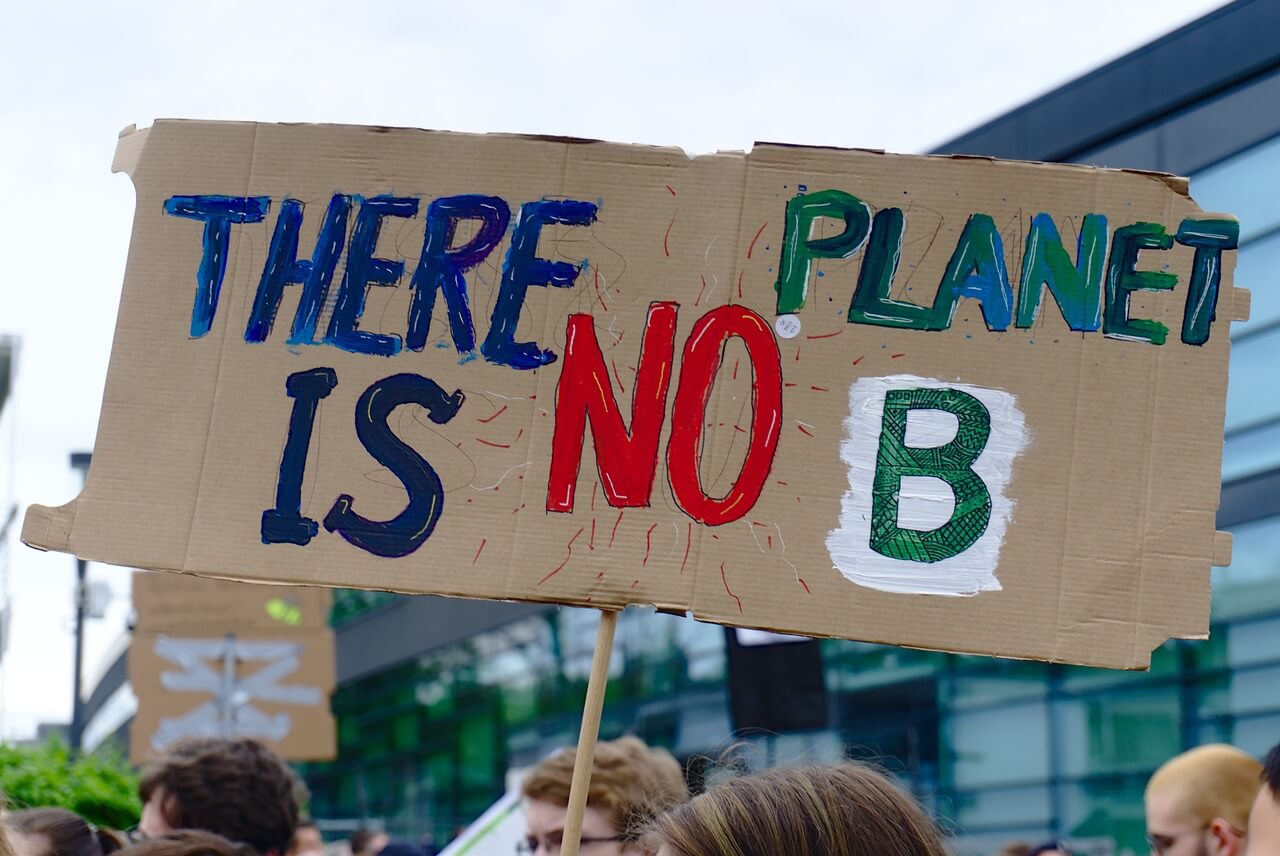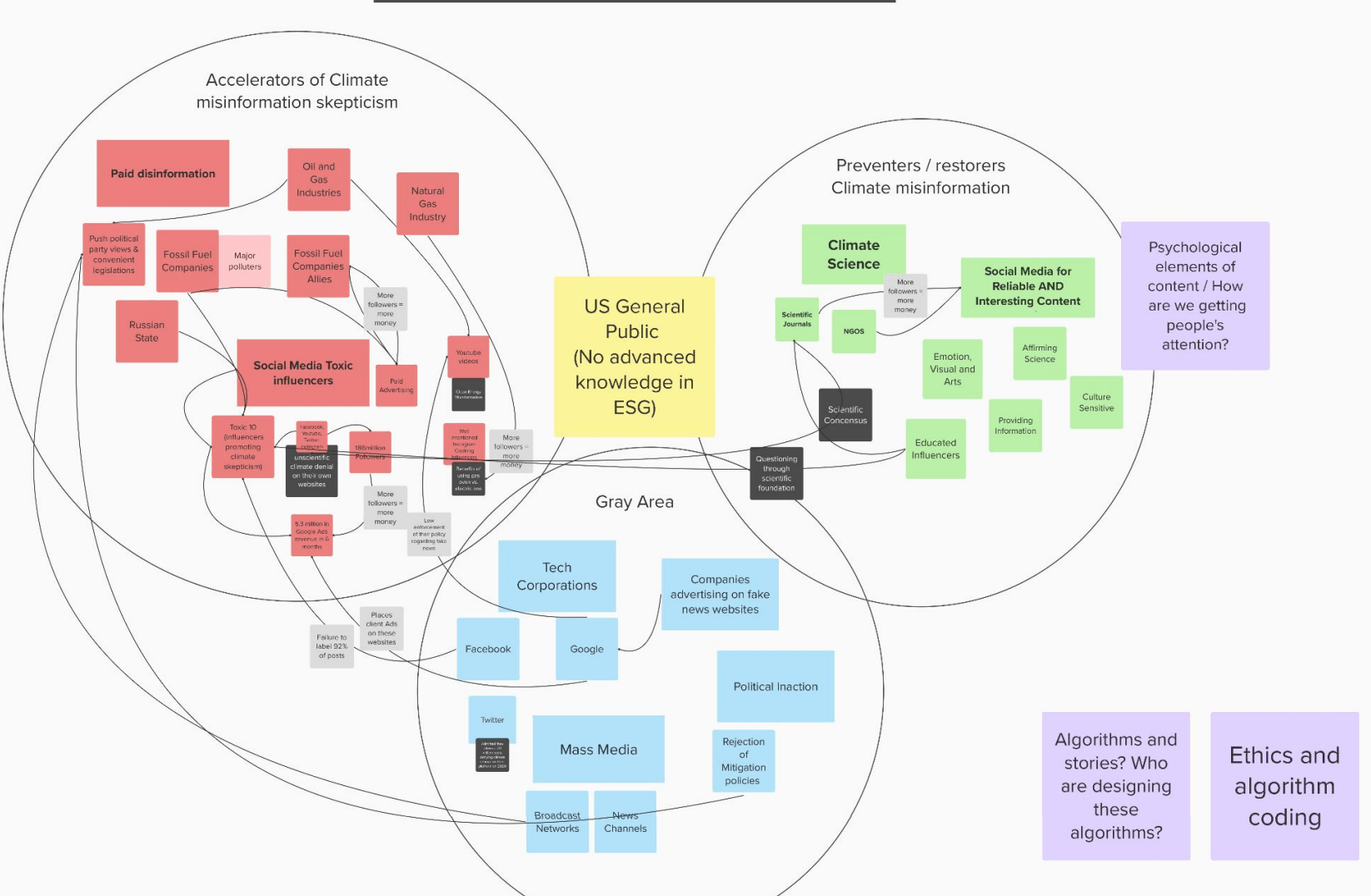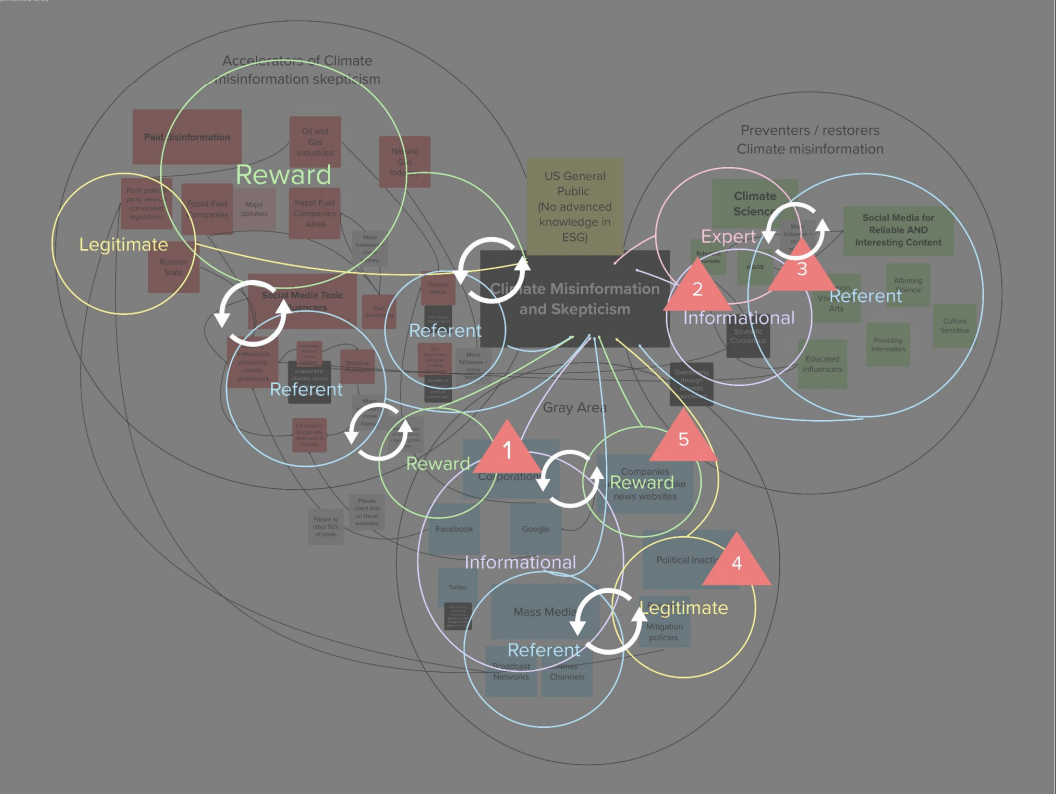Combating Climate Misinformation
By Stephanie Hlywak
December 6, 2023

There are just 10 publishers who are responsible for nearly 70 percent of climate misinformation, according to the Center for Countering Digital Hate.
These include well-known far-right sites like Breitbart, Newsmax, and the Washington Times alongside the more innocuous-sounding Media Research Center and The Daily Wire.
In her research, Eva Althaus (MDM 2024) found that oil and gas industry players partner with these “Toxic 10” publishers through a system of reward and reference. Industry giants pay for the creation and spread of climate misinformation to publishers with huge followings. The Toxic 10 websites, which together have more than 186 million followers, then spread climate denial and misinformation that animates and agitates their audiences.
How does misinformation about climate change enter our media ecosystem? How does it spread? And is there anything climate journalists can do to counter this propaganda?
Althaus doesn’t believe climate misinformation is an accident—but she does think that design can combat it. So she investigated the systems that support the transfer of this misinformation to better understand how the voices of climate journalists, i.e., believers in climate science, can break through the noise.

Mapping climate misinformation
Applying Change Management to Climate
Design possesses the power, Althaus said, not only to create new things but also to illuminate matters that are often in the dark. In her role as a design strategist, she observes the world and discerns how she can use her designer’s toolbox to effect positive change.
Looking to engage in the fight against climate change beyond the personal responsibility of recycling or striving to reduce her carbon footprint, Althaus felt compelled to apply her experience as a seasoned change manager to challenges such as climate action, which require strategic analysis, creative solutions, and network activation.
At the onset, Althaus said she didn’t have a clear destination in mind. Rather, guided by her design training, she began mapping the landscape to uncover power dynamics, address gray areas, and identify intervention points.

Understanding the Issue
The Toxic 10 don’t operate alone. Althaus found that tech companies and mass media have significant control over the infrastructure that enables the spread of climate misinformation, but they have not to this point taken decisive action against it. Misinformation may also be spread by social media influencers who unknowingly endorse false information and climate-damaging products due to their limited awareness of their influence on climate-related matters and lack of education on the subject, making them vulnerable to companies with questionable intentions.
Misinformation, Althaus found, is subsidized when ads are placed on high-traffic websites, including the Toxic 10. Oftentimes, companies that make the products advertised there may be unaware of their ad placements, given the complicated nature and the many third parties and agencies involved in advertising online. However, with the emphasis on clicks and customers, companies may not take action to decouple their ad content from these sites if they are achieving their marketing goals. A significant aspect of the misinformation cycle is the financial incentive generated by high traffic on false information, which is fueled by corporate advertising.
Changing the Dialogue

Intervention 1: Hold Big Tech More Accountable
The first intervention involves better defining how Big Tech, social media companies, influencers, and AI spread misinformation—and how they might be held accountable for their actions. Althaus proposed two ways to achieve this. She recommends creating an independent ethics council that oversees climate information spread by Big Tech—a multidisciplinary group with the ability to participate in shaping the rules related to climate information on media platforms to ensure only accurate information reaches the public. In addition, she recommends building an artificial intelligence fact-checking tool for climate information. AI that screens websites and verifies data through research banks could be a powerful tool for tech platforms looking to pinpoint climate misinformation at a large scale.

Intervention 2: Activate Influencers
Althaus’s second intervention point is an influencer advocacy network that socializes scientific research to the masses and creates climate information that resonates. For example, a coalition of influencers and advocacy groups could come together to sponsor and spread verified information to their audiences. The coalition would bring together experts in environmental science, technology, and government who can benefit each other by leveraging their distinct types of power to combat climate misinformation. By empowering influencers to become advocates of climate change, equipping them with tech tools and scientific data, and offering support for communication best practices to strengthen their understanding of the science, the coalition can play a crucial role in scaling the dissemination of scientific research to audiences that have not been reached before.

Intervention 3: Tax Breaks for Climate Truth
Finally, Althaus proposes establishing governmental mechanisms to accelerate the climate misinformation flight. For example, by empowering governmental oversight of corporate advertising, companies could be penalized for spreading false climate information, thereby disrupting the financial incentives that fuel the spread of misinformation in the first place. Additionally, Althaus proposes tax benefits for companies, publications, and platforms that spread verified climate information. For example, corporate charitable giving to organizations or projects dedicated to the spread of fact-checked climate information could result in significant tax benefits. This would incentivize the funding of scientific studies and verified information, as well as increase traffic to approved websites.
Putting it into Practice
Overall, Althaus’s project aims to shed light on the intricate ecosystem of climate misinformation and equip journalists with a deeper understanding of their pivotal role within this context. Cheryl Dahle, an ID instructor who oversaw Althaus’s project, recognized the potential value of her work in inspiring climate journalists within the Solutions Journalism Network to think critically and actively engage in the battle against climate misinformation. Althaus presented her findings during a monthly climate beacon meeting on September 14, 2023, at which journalists from across the country came together to learn how to enhance their journalistic approach with a focus on solutions.
Based on the positive feedback from that climate meeting, Althaus remains focused on the big-picture goal of inspiring and empowering journalists to transcend traditional truth-telling by embracing a systems-level approach that emphasizes the importance of uncovering, analyzing, and promoting solutions within the climate misinformation system. She also aspires to clarify the often clouded and ambiguous areas of the climate misinformation system so that verified information becomes the dominant narrative.
Looking ahead, Althaus hopes to continue to develop the findings and framework into an actionable guide or book that can be used by climate journalists to empower them to fulfill their mission of dismantling climate misinformation and inspire climate action in their audiences through a systems thinking approach.